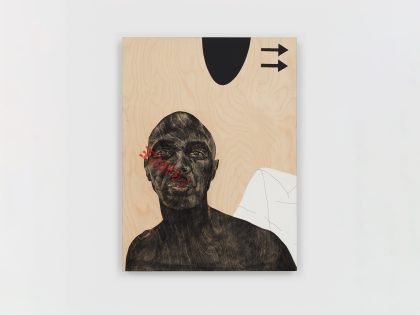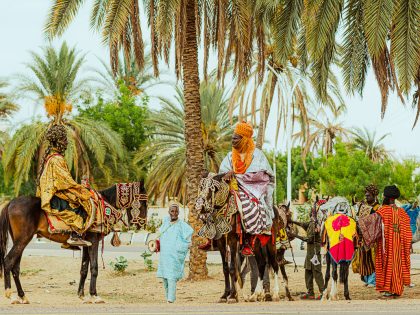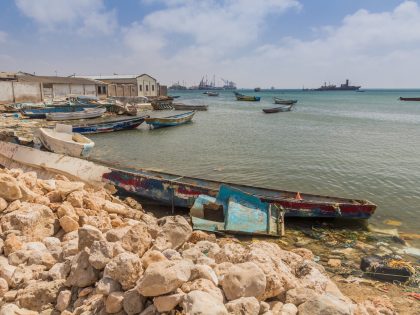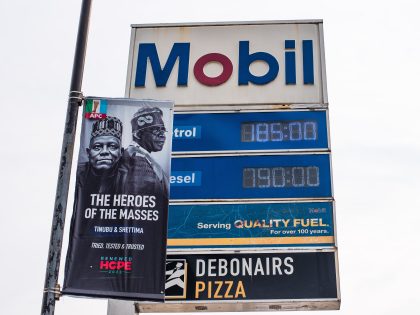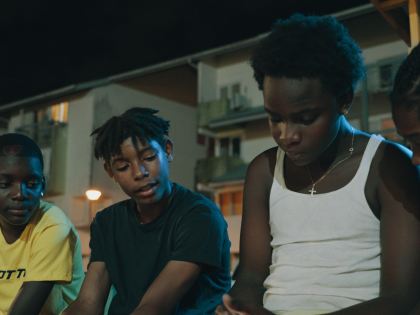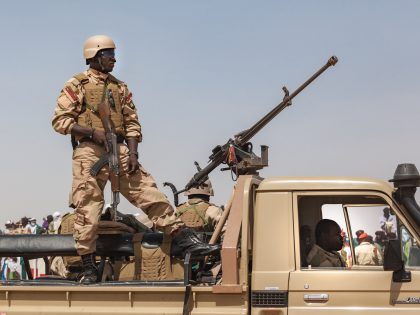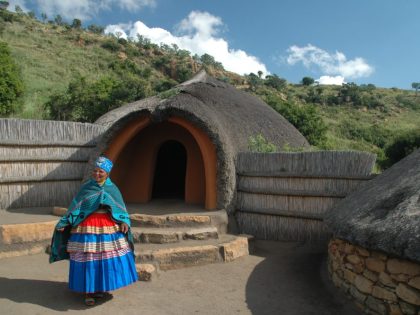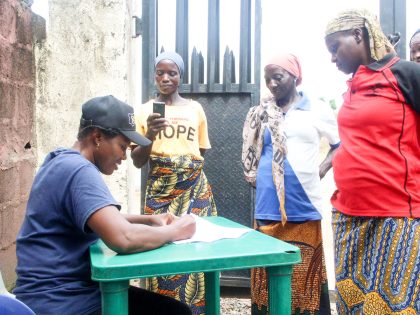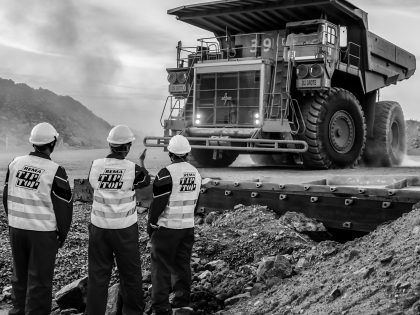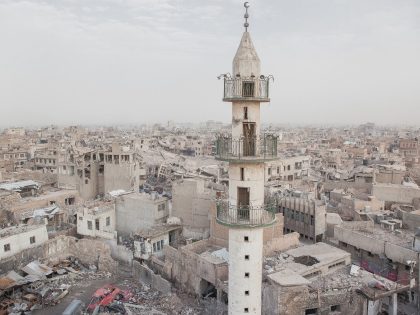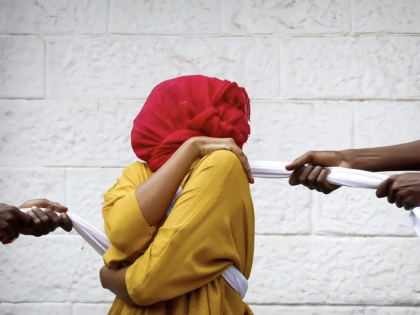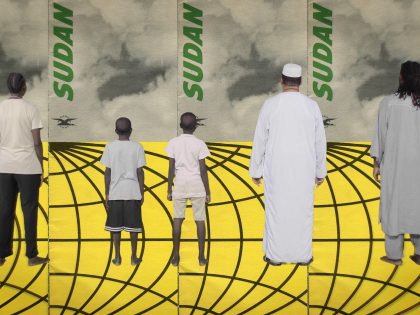Where the social is political
If media claims to be a tool for deepening democracy and development in Africa, why is it necessary for protesters to resort to burning and barricading?

Protest in Standerton, Gauteng. Image via Jan Truter Flickr.
On 9 May 2017, residents of six neighborhoods across South Africa’s richest province, Gauteng, protested about lack of basic services, housing and employment. A local TV news crew captured the frustrations of a resident from Ennerdale, one of the affected neighborhoods: “When voting is over, we don’t exist anymore. … We have been protesting for the past four years, asking, making the same pleas … How long are we supposed to plead? How long are they going to come here and take us for a ride? We don’t love doing what we’re doing.”
From the notes of despair and frustration in her voice, it is evident this was not only about service delivery but also about being seen, heard, and recognized as a citizen.
The spate of protests in Gauteng province were the latest manifestations of what has become a daily occurrence in South Africa over the past 15 years. Figures vary and are often in dispute, depending on whether media reports or different types of police incident records are consulted. What is clear, is that South Africa is increasingly a “country defined by its protests,” – a protest nation.
Protesters use disruption of traffic, occupation of buildings and burning barricades to make their voices heard. A community leader participating in one of these protests suggests, “We had to close the main road because it’s the only thing that gets the attention of the authorities.” Similar strategies are regularly used elsewhere in Africa, whether during the bread riots in Mozambique, anti-government protests in Guinea or struggles over land in Ethiopia’s Oromia region. Damage to property, disruptions and highly visible demonstrations are often used by activists as communicative tools to get politicians or the mainstream media to notice them. As the poor are making use of the only means at their disposal to get the ear of those in positions of power, these protests are often inchoate and disconnected compared with the more orchestrated and targeted lobbying campaigns by elites. The result is that the public sphere, which is also served and supported by the mainstream media, mirrors the inequality of post-colonial African states.
This raises questions: If the mainstream media claims to be a tool for deepening democracy and development in Africa, why is it necessary for protesters to resort to burning and barricading? How does the relationship between media and protest impact on the role that the mainstream media can play in the African public sphere? What are the implications for African democratic processes if protesters prefer direct action to ‘rational’, deliberative debate on media platforms? And, moreover, how do we research the role of social media in African societies?
In many African countries, the mainstream print and broadcast media are either captured by the state or by elites. This means that protests are likely to be presented as threatening to the political or economic status quo. If we consider protests to be legitimate expressions of democratic dissent, this problematic relationship between the mainstream media and protests prompts us to revisit the assumption that there is inherently a direct link between media, democratisation and civic participation in African contexts.
The social is political, and contested
Campaigns such as #BringbackourGirls, #Kony2012 and #FeesmustFall have led to optimistic accounts of the hashtag as a central rallying point of global activism. The mobile phone has proved an invaluable tool in this regard. User-generated videos are spread not only online, but also reach mainstream media agendas. For instance, the 2013 murder of the Mozambican immigrant Mido Macia at the hands of South African police was shot on a mobile phone and sent to the tabloid Daily Sun. Mobilization via mobile phones does not have to be hi-tech either – sometimes a simple text message like the one sent to Maputo residents in the Mozambican bread protests in 2010 simply read “enjoy the great day of the strike” and encouraged recipients to “protest the increase in energy, water, mini-bus taxi and bread prices.”
Critics however point to the weak ties that prevent sustainable organization-building. Low-risk participation has little impact or may wither in the face of pressure. Facebook’s Free Basics campaign in Africa has been criticized for handing control over African’s social media use to a corporate entity and providing a tool for African governments to strengthen control and surveillance. Countries like Gabon, Ethiopia, Chad, Uganda, Zimbabwe and South Africa have in recent years shown that they are willing and capable of shutting down the Internet or blocking mobile signals to stifle unfavorable content. Social media are often used as retrogressive tools to spread hate speech and racism or to oppose movements for change. Furthermore, deep inequalities in access to digital and online media continue to dampen enthusiasm over the revolutionary potential of social media.
The embeddedness of social media in political and social histories means that these platforms are appropriated, adopted and adapted within cultural contexts where other forms of political expression pre-exist. For instance, social media may be used alongside a repertoire of communication methods which may include door-to-door visits, telephone calls, loudhailing or distribution of leaflets, or in combination with other informal, small-scale communication methods. These may include singing, marching, dancing (toyi-toying), displaying of placards, graffiti and conspicuous wearing of T-shirts and caps that provide additional symbolic resources for activists to draw on. Given the mainstream media’s frequent marginalization of protests, these informal, often highly visual expressions and performances are used to influence or impact on mainstream media agendas by attracting the attention of journalists.
The challenges for research
Research into media and protests in Africa has to avoid treating Africa as a monolith, but allow for differences within and across African movements, societies and countries even as it recognizes the importance of comparative work. Focusing on Africa as the context of study should avoid treating Africa as an exception or a case to illustrate theories developed in the Global North, but allow for theory-building from the ground up.
The dominant macro-analyses of social media in Africa, for instance connection rates, usage figures and costing, should be complemented by a much wider and deeper engagement with the social and cultural dimensions of adoption, appropriation and amplification taking place through social media in local contexts. Instead of fetishizing technology in terms of its ‘impact’, or dismissing it as irrelevant compared to more established, direct forms of action, we need approaches to social media as forms of technology-in-relation, that is, technology as already embedded in the everyday lives of people, and in existing historical and political realities.
* Digital Africa is a collection of posts exploring ‘African Media in the Digital Age,’ also the subject of an International Communication Association Preconference held at Stanford University in May 2017. The posts were compiled and edited by Toussaint Nothias, a lecturer in the Center for African Studies at Stanford University.








